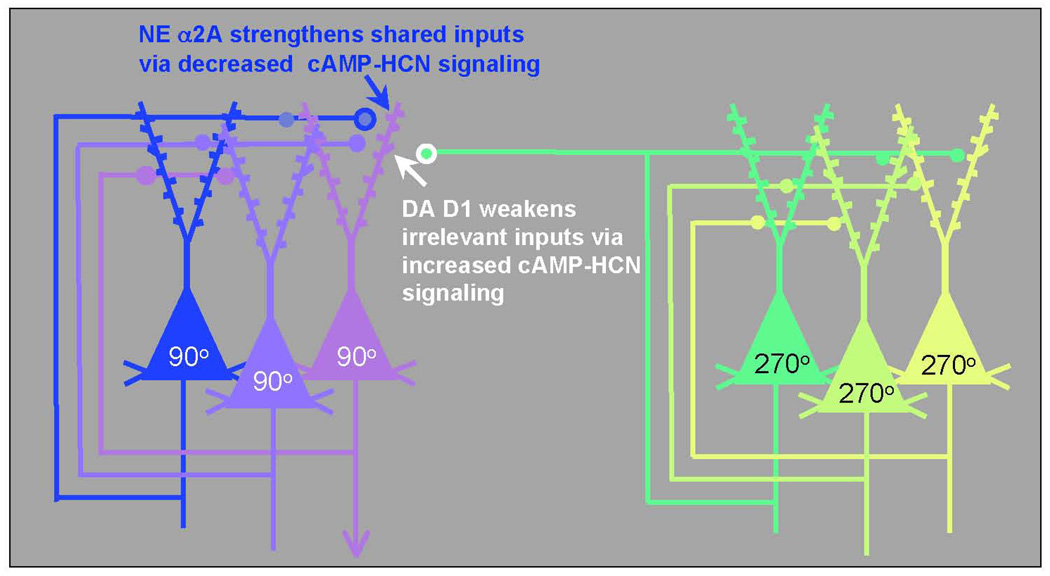Figure 3.
The PFC guides attention, behavior, and emotion through networks of pyramidal cells. These pyramidal cells engage in recurrent excitation to represent stimuli (e.g., the spatial positions 90° or 270°, as shown here) or to represent goals or rules. The networks interconnect through synapses on dendritic spines that contain NE alpha-2A receptors or DA D1 receptors. Network connectivity is powerfully modulated by the catecholamines: NE alpha-2A receptor stimulation strengthens network inputs from cells with shared network properties by reducing the production of cAMP, thus closing HCN channels and enhancing synaptic inputs to the spine (increasing “signals”). Conversely, optimal levels of DA D1 receptor stimulation weaken irrelevant inputs to the neuron by increasing the production of cAMP, opening HCN channels near the synapse, and shunting incoming information (decreasing “noise”). Thus, for the network representing 90°, alpha-2A receptor stimulation increases the strength of connections from other 90° neurons, and D1 receptor stimulation weakens the connections from neurons with dissimilar characteristics (e.g., 270°). Adapted with permission from Arnsten AF 2007.10

